24 Best HTML and CSS Editor
Last updated on January 19, 2025 by RGB Web Tech

We all make mistakes, and that also applies to write code. But whether you’re just starting or are a seasoned vet, making an error in your code can cause you a real headache. As we use all kinds of tools to help us with simple tasks, such as spellcheck for writing, an HTML (HyperText Markup Language) editor is no different. HTML editors have a lot of features behind them, and we will be covering that and much more when we look at the list of the best HTML editors.
There are two types of HTML editors available:
Since we discussed what is an HTML Editor and when to use one, we can finally sink our teeth into the actual editors themselves and pick the best HTML Editor.
We all have different tastes, and when it comes to choosing a platform for our work, where we will spend a lot of time on, it’s important to pick one that best suits us. Each editor has the same basic features. However, some provide more visual representation than others, more additional packages to install, and so on.
The list of the Best HTML Editors is based on popularity, features, design and alexa rank:
1. Adobe Dreamweaver CC HTML Editor
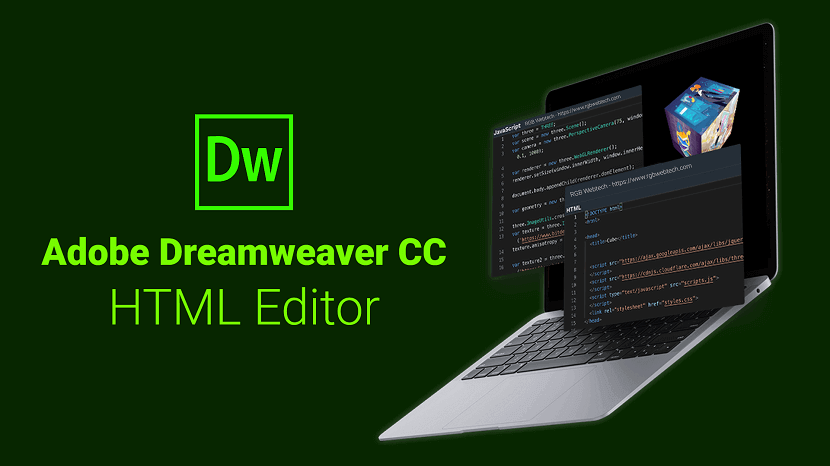
Adobe Dreamweaver is a proprietary web development tool from Adobe Inc. It was created by Macromedia in 1997 and developed by them until Macromedia was acquired by Adobe Systems in 2005.
Adobe Dreamweaver is available for the macOS and Windows operating systems.
Following Adobe's acquisition of the Macromedia product suite, releases of Dreamweaver subsequent to version 8.0 have been more compliant with W3C standards. Recent versions have improved support for Web technologies such as CSS, JavaScript, and various server-side scripting languages and frameworks including ASP (ASP JavaScript, ASP VBScript, ASP.NET C#, ASP.NET VB), ColdFusion, Scriptlet, and PHP.
Highlights:
- Alexa Rank - 53
- Developer(s) - Adobe Inc. (2005–present)
- Macromedia - (before 2005)
- Initial release - December 1997; 22 years ago
- Stable release - 2020 (20.1) / February 2020; 5 months ago
- Written in - C++
- Operating system - Windows 10 version 1703 and above, macOS 10.12 Sierra and above
- Type - HTML editor, programming tool, integrated development environment (IDE)
- License - Trialware software as a service
- Website - https://www.adobe.com/products/dreamweaver.html
2. Visual Studio Code HTML Editor
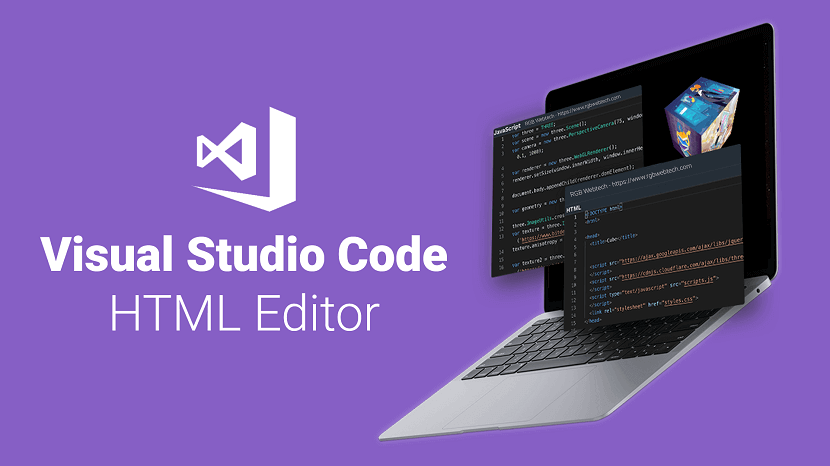
Visual Studio Code is a free source-code editor made by Microsoft for Windows, Linux and macOS. Features include support for debugging, syntax highlighting, intelligent code completion, snippets, code refactoring, and embedded Git. Users can change the theme, keyboard shortcuts, preferences, and install extensions that add additional functionality.
Visual Studio Code's source code comes from Microsoft's free and open-source software VSCode project released under the permissive Expat License, but the compiled binaries are freeware for any use.
Highlights:
- Alexa Rank - 973
- Developer(s) - Microsoft
- Initial release - April 29, 2015
- Stable release - July 23, 2020
- Written in - TypeScript, JavaScript, CSS
- Operating system - Windows 7 or later, OS X 10.9 or later, Linux
- Type - Source code editor, debugger
- License - Source code for Expat License & Binaries for Freeware
- Website - https://code.visualstudio.com
3. Notepad++ HTML Editor
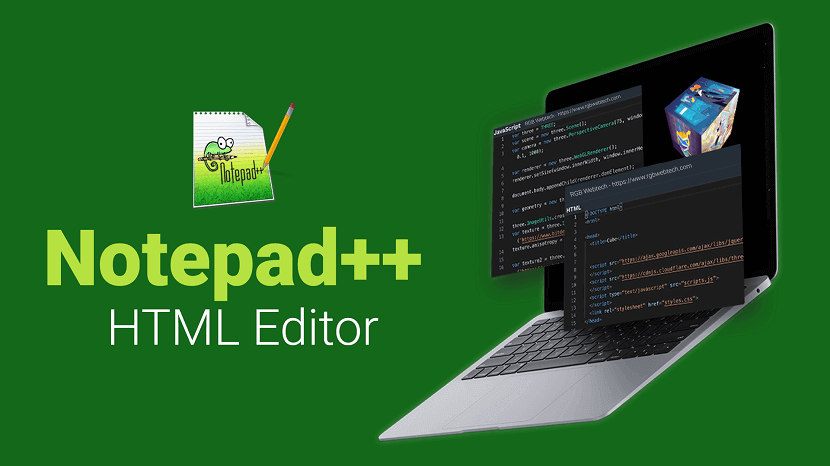
Notepad++ is a free HTML editor that was developed for Windows-based machines. Linux users can also use it via Wine. This editor is distributed as free software and its repository is also available in GitHub. Like other community projects, third-party plugins are supported.
Notepad++ distinguishes its development environment for its simplicity. Notepad++ is super lightweight; there’s even a mobile version if you fancy it. Here are some highlights:
Highlights:
- Alexa Rank - 5991
- Developer(s) - Don Ho
- Initial release - 24 November 2003
- Stable release - July 16, 2020
- Written in - C++
- Operating system - Microsoft Windows
- Type - Source Code Editor
- License - GPLv2
- Website - https://notepad-plus-plus.org/downloads/
4. Bubble WYSIWYG Editor

Bubble is ideal for creating and launching fully-functional web applications in a fraction of the time it would take to build them from scratch. Its robust point-and-click editor allows you to build and customize your web applications and workflows — whether they’re simple prototypes, sophisticated SaaS products, or entire marketplaces.
Bubble has a user-friendly interface that makes building and customizing applications simple for those who aren't tech savvy. Users can also choose to incorporate logic into workflow programs so they are under specific conditions.
Lastly, Bubble integrates readily with any service that displays the REST API. These integrations include Facebook, Google Analytics, SQL, and many payments applications.
Highlights:
- Alexa Rank - 7,745
- Developer(s) - Bubble Group
- Website - https://bubble.io/
5. Sublime Text HTML Editor
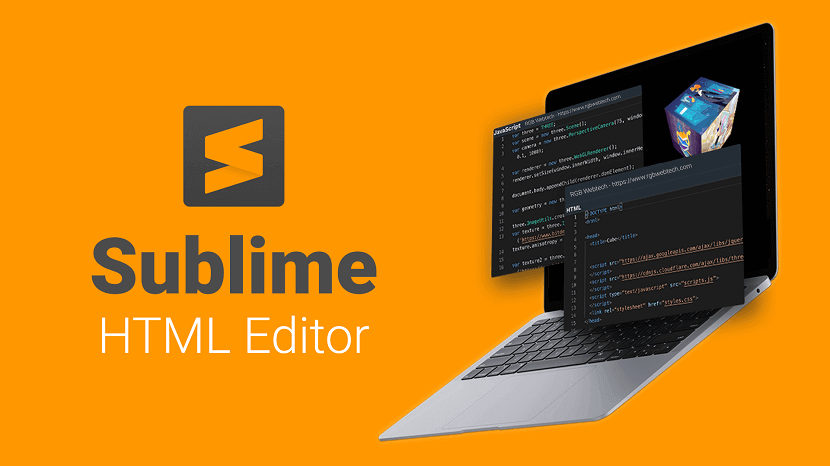
Sublime is another excellent free HTML editor. Developed by a Sydney-based company, this software falls under the category of freemium. Freemium means that you can use Sublime for free, but you have to buy a license to enjoy the full features.
Sublime offers great support to ensure that the program is constantly updated. Users can add plugins made by the community or build their own. We think using the free version of Sublime is more than adequate. However, if you feel like you need more features, you can get the license at a later point.
Highlights:
- Alexa Rank - 8559
- Developer(s) - Jon Skinner
- Initial release - January 18, 2008
- Stable release - October 1, 2019
- Written in - C++, Python
- Operating system - Linux 32/64-bit, macOS 10.6 or later (version 2), 10.7 or later (version 3), Microsoft Windows 32/64-bit
- License - Proprietary
- Website - https://www.sublimetext.com
6. Atom HTML Editor
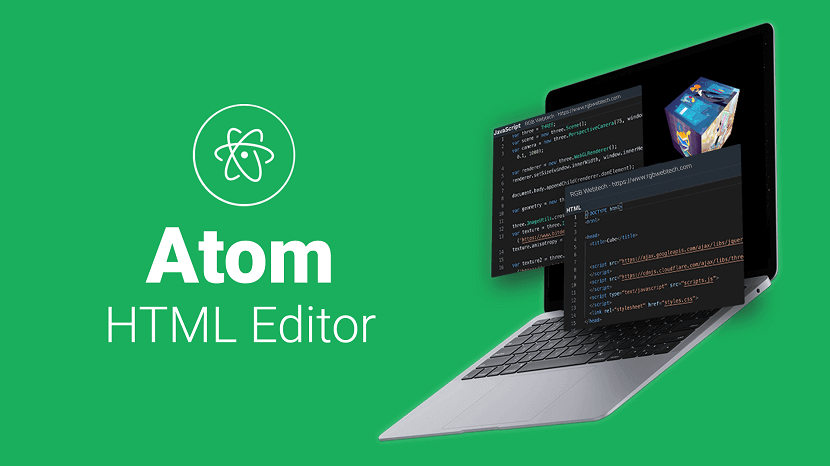
Atom is an HTML editor that came out in 2014 and gained tremendous momentum since. Atom is a free, open-source code editor, and it was developed by the GitHub team. Atom uses a free software license for its package and it is maintained by the GitHub community. It aims to offer a premium feel to the editor while keeping it completely free. As well as the flexibility to customize the software itself.
As for the tagline, they boast as a hackable text editor for the 21st century. It means that developers can contribute to edit, extend, change, and share the program source code as well as create their packages to improve Atom.
Highlights:
- Alexa Rank - 9586
- Developer(s) - GitHub (subsidiary of Microsoft)
- Initial release - 26 February 2014
- Stable release - 14 July 2020
- Written in - Electron (back-end), CoffeeScript / JavaScript / Less / HTML (front-end/UI)
- Operating system - macOS 10.9 or later, Windows 7 and later, and Linux
- Type - Source code editor
- License - Binaries for Freeware and Source code for MIT License (free software)
- Website - https://atom.io
7. CKEditor WYSIWYG Editor

CKEditor is a browser-based rich text editor. It's extensible with a plugin-based architecture that makes it possible to bring necessary content processing features to the web.
On the market for almost 15 years, CKEditor earns its place on this list because of its tenure as one of the most reputable editors with wide-ranging features and legacy software compatibility.
According to users, ease of setup is one of its best qualities. CKEditor’s other benefits include fast loading (which saves development time) and the ability to modify projects on the fly without manually editing and uploading them to your server.
Highlights:
- Alexa Rank - 10,670
- Developer(s) - CKSource
- Stable release CKEditor 4 - July 17, 2020
- Stable release CKEditor 5 - July 24, 2020
- Written in - JavaScript
- Type - HTML editor, online rich-text editor
- Website - https://ckeditor.com/
8. TinyMCE WYSIWYG Editor

TinyMCE is the rich text editor behind many products including Evernote, Atlassian, and Medium.
According to its developers, the goal of TinyMCE is to help other developers build beautiful web content solutions. It's easy to integrate and can be deployed in cloud-based, self-hosted, or hybrid environments. The setup makes it possible to incorporate frameworks such as Angular, React, and Vue.
TinyMCE gives you full control of your design with functions for creating and editing tables, establishing font families, searching and replacing fonts, and changing font size.
Highlights:
- Alexa Rank - 14,686
- Developer(s) - Tiny Technologies Inc.
- Stable release - July 2, 2019
- Written in - JavaScript
- Operating system - Cross-platform
- Type - HTML editor
- License - LGPL
- Website - www.tiny.cloud
9. NetBeans HTML Editor
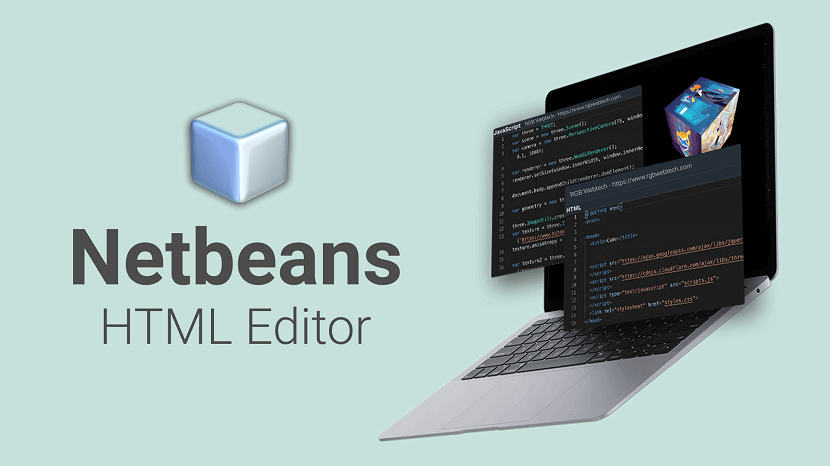
NetBeans is an integrated development environment (IDE) for Java. NetBeans allows applications to be developed from a set of modular software components called modules. NetBeans runs on Windows, macOS, Linux and Solaris. In addition to Java development, it has extensions for other languages like PHP, C, C++, HTML5, and JavaScript. Applications based on NetBeans, including the NetBeans IDE, can be extended by third party developers.
Highlights:
- Alexa Rank - 21,764
- Developer(s) - Apache Software Foundation Oracle Corporation
- Stable release - June 4, 2020
- Written in - Java
- Operating system - Windows, macOS, Linux, Solaris; feature-limited OS independent version available
- Type - IDE
- License - Apache License 2.0 (previously CDDL or GPLv2 with classpath exception)
- Website -https://netbeans.org/
10. Komodo Edit HTML Editor
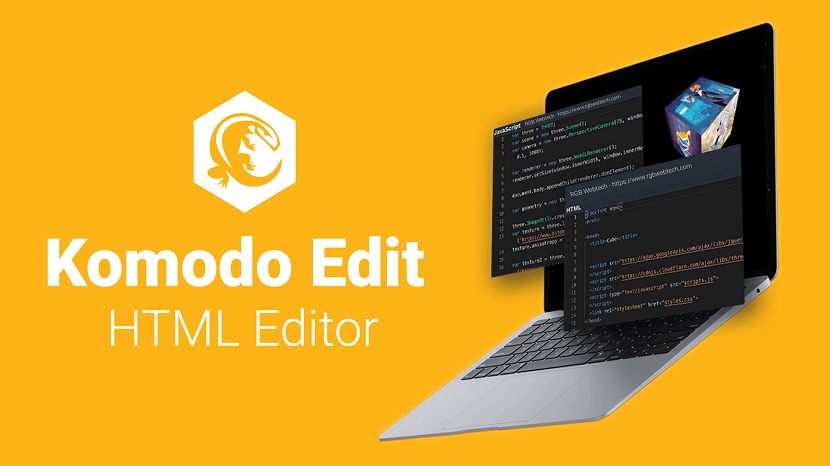
Komodo Edit is a great editor if you’re looking for something powerful, yet simple. It is a free and fast HTML editor for numerous platforms such as macOS X, Windows, and Linux. It supports multiple languages such as HTML5, PHP, Perl, Ruby on Rails, Python, CSS3, JavaScript. It offers syntax highlight and code coloring options.
Highlights:
- Alexa Rank - 22,933
- Developer(s) - ActiveState
- Initial release - November 2007
- Stable release - June 21, 2018
- Written in - C++, C, XUL, Perl, Python, JavaScript, Tcl
- Operating system - macOS X, Windows, and Linux
- Type - Text editor, IDE
- License - Mozilla Public License 1.1
- Website - https://www.activestate.com/products/komodo-edit/
11. Froala WYSIWYG Editor

Froala is a lightweight WYSIWYG HTML editor written in JavaScript with built-in rich text capabilities and rapid extension. It has a clean design and is known to be easy to set up. The learning curve to master the use of this tool isn't steep, making it appealing to users who want to start working on their projects quickly.
Among development teams, Froala is a top pick because of its unique, real-time collaborative editing feature. Thanks to detailed documentation, powerful framework plugins, and many examples, Froala seamlessly integrates with existing technological infrastructure.
Also, the rich text editor — which initializes in 40 milliseconds — provides a great editing experience on any application.
Highlights:
- Alexa Rank - 29,854
- Developer(s) - Froala Labs
- Stable release - January 13, 2020
- Written in - JavaScript
- Type - HTML editor, online rich-text editor
- License - 3 licenses: Basic License (up to 3 domains), Pro License (unlimited domains), and Enterprise License (unlimited domains).
- Website - https://froala.com/
12. Brackets HTML Editor
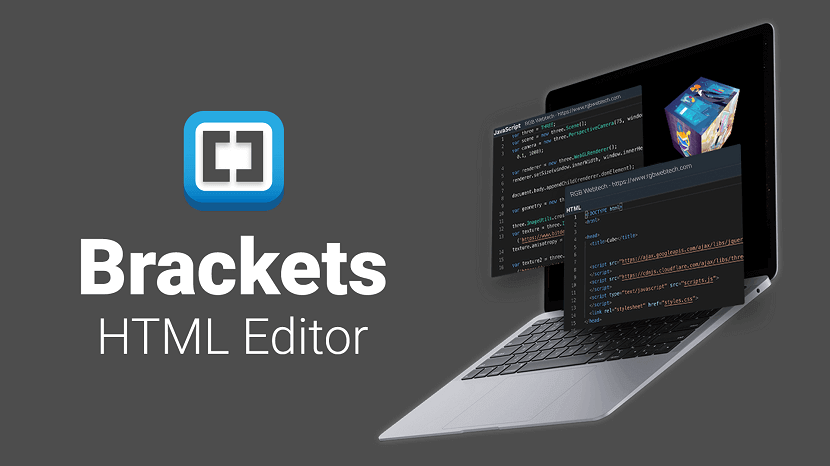
Brackets is a source code editor with a primary focus on web development. Created by Adobe Systems, it is free and open-source software licensed under the MIT License, and is currently maintained on GitHub by Adobe and other open-source developers. It is written in JavaScript, HTML and CSS. Brackets is cross-platform, available for macOS, Windows, and most Linux distributions. The main purpose of Brackets is its live HTML, CSS and JavaScript editing functionality.
Highlights:
- Alexa Rank - 38,659
- Developer(s) - Adobe Systems
- Initial release - 4 November 2014
- Stable release - April 5, 2020
- Written in - JavaScript, HTML, CSS
- Operating system - macOS, Windows and Linux
- Type - Source code editor
- License - MIT License
- Website - http://brackets.io/
13. CoffeeCup HTML Editor
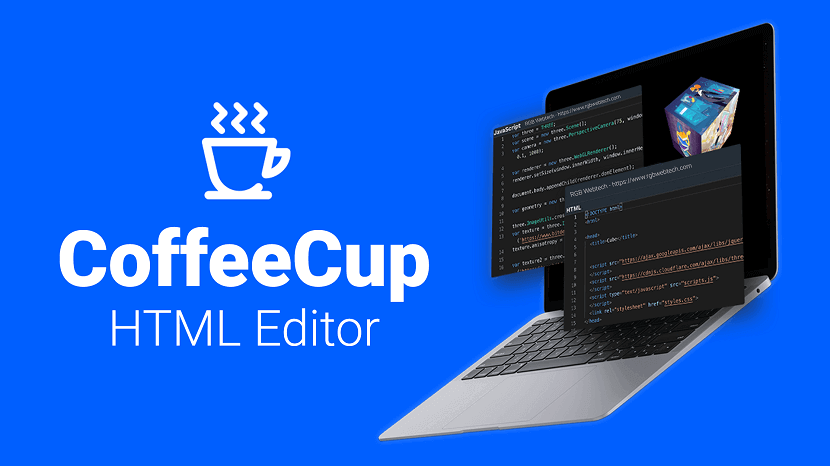
CoffeeCup Software is an American computer software development company based in Atlanta, Georgia, United States founded in 1996. The name comes from the company's origins in an internet cafe owned by its founder.
The company currently creates software applications for creating, designing, and editing responsive websites and a number of online services for webmasters. The company's third product, CoffeeCup Direct FTP, was the first FTP program to incorporate text editing functionality directly into the interface in a "split screen" fashion.
Highlights:
- Alexa Rank - 46,438
- Developer(s) - CoffeeCup Software
- Initial release - August 1996
- Stable release - June 5, 2012
- Operating system - Windows XP, Windows Vista, Windows 7
- Type - HTML editor
- License - Freemium trialware
- Website - https://www.coffeecup.com/
14. Editor.js WYSIWYG Editor
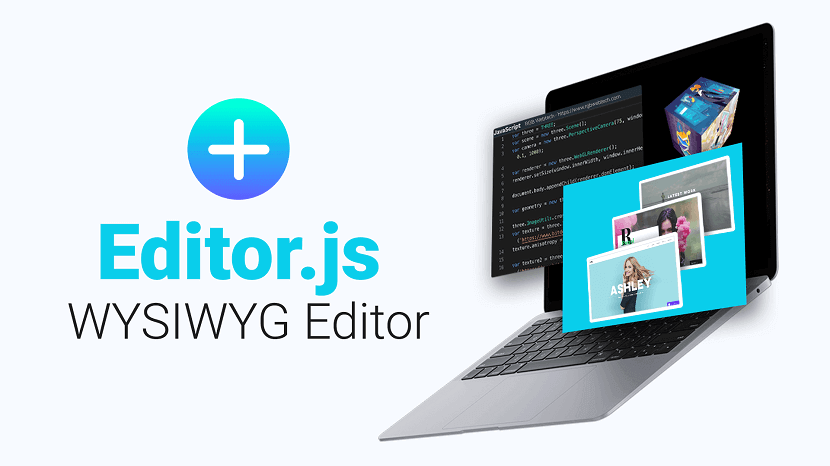
Editor.js is an open-source editor. It allows you to edit blocks of content that you can move around and reorder (it works in a similar way to WordPress's Gutenberg editor). When you click on a block, it shows the specific options available for that particular block. Similarly, when clicking on text content, options for text formatting and inline styles appear.
Editor.js is designed to be extensible and pluggable, thanks to its Application Programming Interface (API). It also returns clean data in the JSON output format.
Highlights:
- Alexa Rank - 86,163
- Developer - Editor.js
- Operating system - Windows
- Type - HTML Editor
- Website - https://editorjs.io/
15. Phase 5 HTML Editor
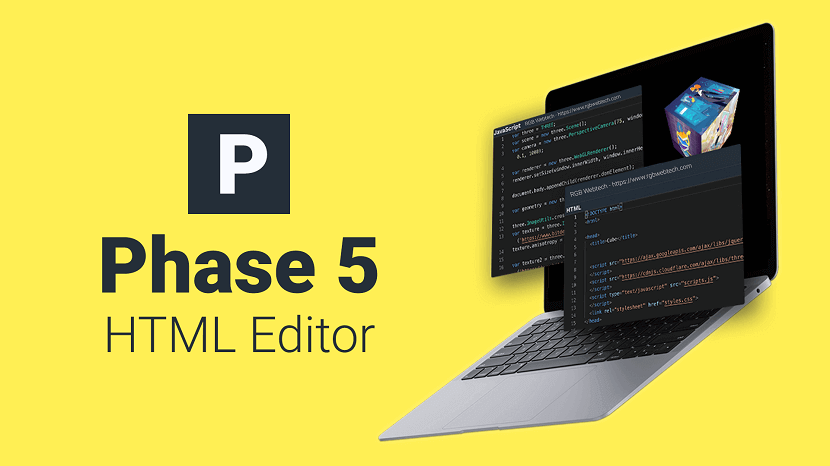
Phase 5 is an impressive German HTML editor. It is freeware but only for Schools and Home users. If you run a big organization or a Company then you are required to buy the license key to run the program. Phase 5 is compatible with Windows only. Phase 5 HTML editors support different languages such as HTML, PHP, Java, JavaScript, Pearl, and VBScript. It has a crisp and clear Menu arrangement. Integrated file management makes the switching between different documents easy. Phase 5 has a tidy interface to work with.
Highlights:
- Alexa Rank - 3,534,141
- Developer(s) - Ulli Meybohm
- Operating system - Windows
- License - Freeware
- Website - https://www.phase5.info/
16. Kompozer WYSIWYG Editor

KompoZer is a discontinued open source WYSIWYG HTML editor based on the Nvu editor, which was itself derived from the composer component of the Mozilla Application Suite. KompoZer was forked as a community-driven project with development coordinated through Sourceforge.
KompoZer's WYSIWYG editing capabilities are one of the main attractions of the software. In addition, KompoZer allows direct code editing as well as a split code-graphic view.
Highlights:
- Developer(s) - Fabien Cazenave
- Initial release - 30 August 2007
- Stable release - 11 March 2010
- Type - HTML editor
- License - MPL/GPL/LGPL tri-license
- Website - https://sourceforge.net/projects/kompozer/
17. UltraEdit HTML Editor
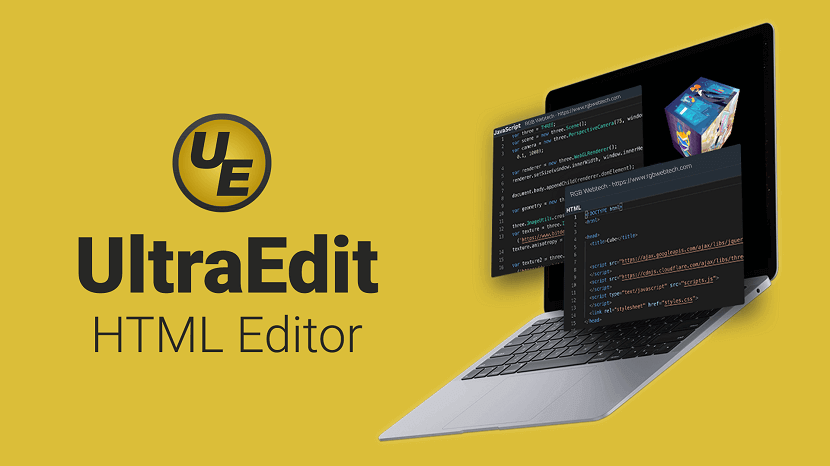
UltraEdit is a commercial text editor for Microsoft Windows, Linux and OS X created in 1994 by the founder of IDM Computer Solutions Inc., Ian D. Mead. The editor contains tools for programmers, including macros, configurable syntax highlighting, code folding, file type conversions, project management, regular expressions for search-and-replace, a column-edit mode, remote editing of files via FTP, interfaces for APIs or command lines of choice, and more. Files can be browsed and edited in tabs, and it also supports Unicode and hex editing mode.
Highlights:
- Alexa Rank - 105,725
- Developer(s) - IDM Computer Solutions, Inc
- Operating system - Windows, Linux, macOS
- Type - Text editor
- License - Trialware
- Website - https://www.ultraedit.com/
18. BareBones Edit HTML Editor
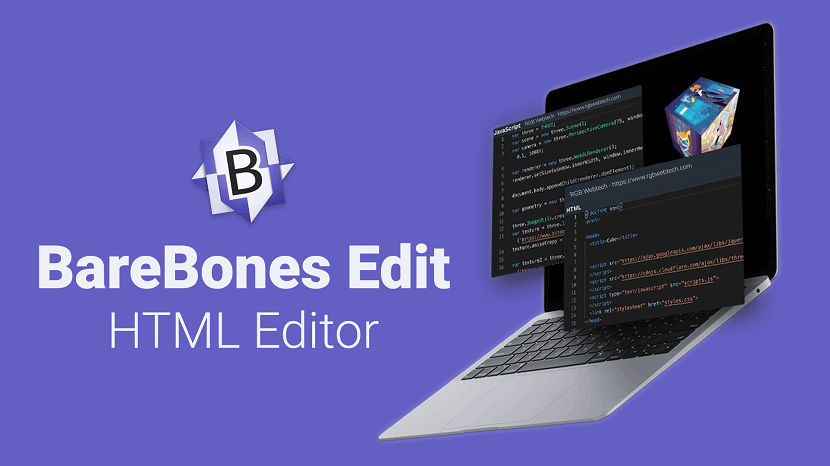
Bare Bones Edit Software is a private North Chelmsford, Massachusetts, United States software company developing software tools for the Apple Macintosh platform. The company developed the BBEdit text editor, marketed under the registered trademark "It doesn't suck", and has been mentioned as a "top-tier Mac developer" by Mac OS X journalist John Siracusa.
The company was founded in May 1993, and incorporated under the Commonwealth of Massachusetts in June 1994.
Highlights:
- Alexa Rank - 189,031
- Developer(s) - Bare Bones
- Operating system - macOS
- License - Freeware
- Website - http://www.barebones.com/
19. TextMate HTML Editor
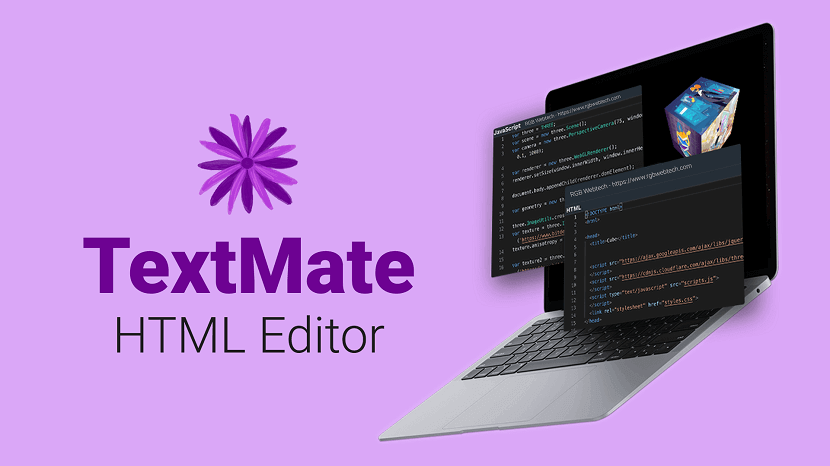
TextMate for Mac brings Apple's approach to operating systems into the world of text editors. By bridging UNIX underpinnings and GUI, TextMate cherry-picks the best of both worlds to the benefit of expert scripters and novice users alike.
Whether you are a programmer or a designer, the production of code and markup is hard work. Without an editor dedicated to the task, it is also often cumbersome, overwhelming, and repetitive. Especially when you are dealing with a lot of files at once — like most projects do. The tool puts you back in control, reduces the mental overhead, and turns manual work into something the computer does.
Created by a closet UNIX geek who was lured to the Mac platform by its ease of use and elegance, TextMate for macOS has been referred to as the culmination of Emacs and macOS and has resulted in countless requests for both a Windows and Linux port, but the app remains exclusive for the Mac, and that is how we like it!
TextMate for Mac is not an IDE but by using its powerful snippets, macros, and unique scoping system, it can often provide features that even a language specific IDE lacks. It has enough project management features to keep most users happy but is otherwise kept lightweight with a clean and minimalistic GUI.
Highlights:
- Alexa Rank - 207,506
- Developer(s) - Allan Odgaard (MacroMates), Ciarán Walsh
- Initial release - 5 October 2004
- Stable release - 28 December 2019
- Operating system - macOS
- Type - Source code editor
- Website - https://macromates.com/
20. Setka WYSIWYG Editor

Setka Editor is a content editing platform with a no-code WYSIWYG editor and a channel-agnostic framework. This allows remote teams of any size to collaborate on content design projects and implement decisions quickly.
Setka is designed to help development teams efficiently deliver delightful and engaging content experiences with their content layouts and strong support.
Highlights:
- Alexa Rank - 269,415
- Developer(s) - Setka
- Operating system - WYSIWYG
- Website - https://setka.io/
21. Aptana Studio HTML Editor
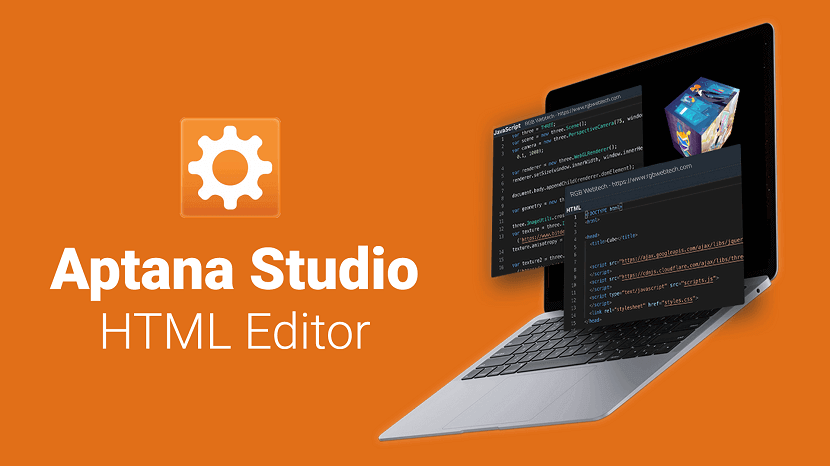
Aptana Studio is an open-source integrated development environment (IDE) for building web applications. Based on Eclipse, it supports JavaScript, HTML, DOM and CSS with code-completion, outlining, JavaScript debugging, error and warning notifications and integrated documentation. Additional plugins allow Aptana Studio to support Ruby on Rails, PHP, Python, Perl, Adobe AIR, Apple iPhone and Nokia WRT (Web Runtime). Aptana Studio is available as a standalone on Windows, Mac OS X and Linux, or as a plugin for Eclipse.
Highlights:
- Alexa Rank - 355,640
- Developer(s) - Aptana Inc.
- Stable release - November 19, 2014
- Written in - Java, JavaScript
- Operating system - Cross-platform
- Type - Web Development / IDE
- License - Dual License (Aptana Public License, v1.0, GNU General Public License)
- Website - http://www.aptana.com/
22. CotEditor HTML Editor
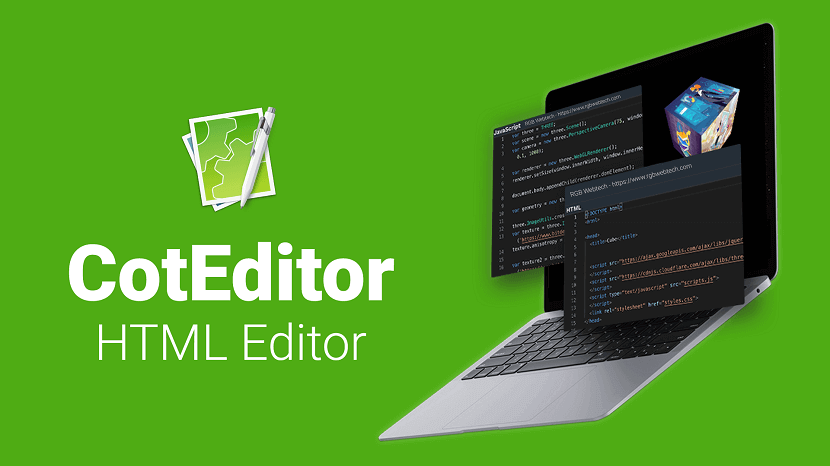
CotEditor is exactly made for macOS. It looks and behaves just as macOS applications should. It launches so quickly that you can write your text immediately when you want to. It is developed as an open-source project that allows anyone to contribute.
Highlights:
- Alexa Rank - 613,879
- Developer(s) - Mineko Imanishi
- Operating system - macOS
- Website - https://coteditor.com/
23. Bluefish HTML Editor
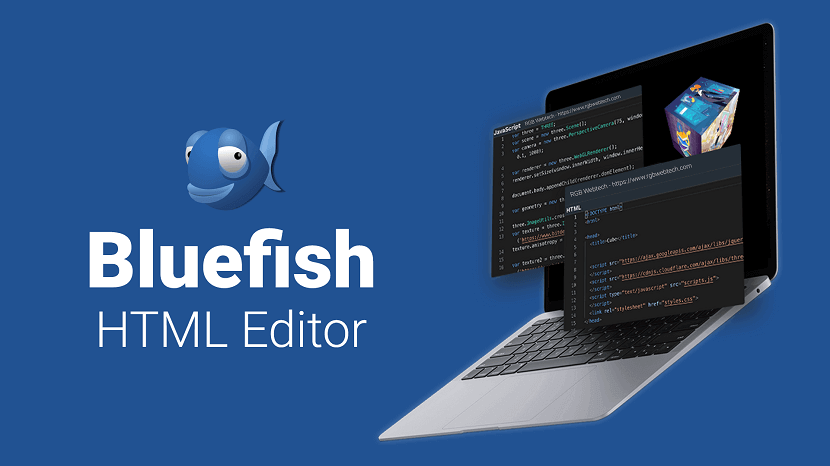
Bluefish is a powerful editor targeted towards programmers and web developers, with many options to write websites, scripts and programming code. Bluefish supports many programming and markup languages. See features for an extensive overview, take a look at the screenshots, or download it right away. Bluefish is an open source development project, released under the GNU GPL licence.
Bluefish is a multi-platform application that runs on most desktop operating systems including Linux, FreeBSD, MacOS-X, Windows, OpenBSD and Solaris.
Highlights:
- Alexa Rank - 617,644
- Developer(s) - Bluefish Dev Team
- Stable release - January 24, 2020
- Written in - C
- Operating system - Cross-platform (POSIX)
- Type - Text editor
- License - GPL
- Website - http://bluefish.openoffice.nl/index.html
24. NoteTab HTML Editor
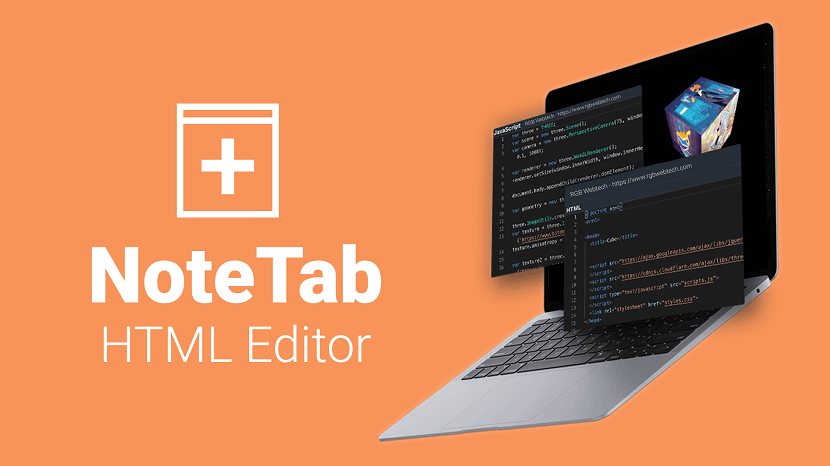
NoteTab is a freeware/commercial, multi-file, full-screen text editor for MS Windows. It was developed by Eric Fookes of Fookes Software, Switzerland. The program's name refers to the fact that it was one of the earliest text-editors to use a Tabbed Document Interface.
Highlights:
- Alexa Rank - 1,055,075
- Developer(s) - Eric Fookes
- Stable release - 4 November 2014
- Operating system - Windows
- Type - Text editor
- License - freeware/commercial depending on version
- Website - https://www.notetab.com/
Conclusion:
Getting a helping hand to write code faster and more efficiently is becoming a must, now more than ever. Whether you just started coding or you’re a seasoned vet, we believe that an HTML editor can become anyone’s best friend. Features aside, picking the best HTML editor that suits you might be hard. We encourage you to experiment with different editors and choose one that fits your style and workflow best.
We would also note that unless you need 24/7 support and manage code for a huge company, you will probably be fine with a free editor.
If you want to explore more about Text Editor or WYSIWYG Editor, We recommend you to go through our detailed article of HTML Editors.
If you found this article helpful, we encourage you to share it on your social media platforms—because sharing is caring! For more information about article submissions on our website, feel free to reach out to us via email.
Send an emailWritten by RGB Web Tech
Latest Technology Trends
Latest technology trends shaping the future, including AI advancements, blockchain innovation, 5G connectivity, IoT integration, and sustainable tech solutions. Explore breakthroughs in quantum computing, cybersecurity, augmented reality, and edge computing. Stay ahead with insights into transformative technologies driving innovation across industries and revolutionizing how we live, work, and connect.
17 Best HTML and CSS Editor
Last updated on January 19, 2025 by RGB Web Tech

HTML editor is a tool that helps you to edit and create HTML(Hypertext Markup Language) code. It is a text-based tool which lets you edit your source code directly.
HTML editor is a tool that helps you to edit and create HTML(Hypertext Markup Language) code. It is a text-based tool which lets you edit your source code directly.
HTML editor is the essential part of web design and development!
It is a best practice to take help of HTML editors as they give you a clear understanding of the code. Most of the professional web developers depend on the HTML editors to maintain and create their websites.
The list of the Best HTML Editors is based on popularity, features, design and alexa rank:
1. Adobe Dreamweaver CC HTML Editor

Adobe Dreamweaver is a proprietary web development tool from Adobe Inc. It was created by Macromedia in 1997 and developed by them until Macromedia was acquired by Adobe Systems in 2005.
Adobe Dreamweaver is available for the macOS and Windows operating systems.
Following Adobe's acquisition of the Macromedia product suite, releases of Dreamweaver subsequent to version 8.0 have been more compliant with W3C standards. Recent versions have improved support for Web technologies such as CSS, JavaScript, and various server-side scripting languages and frameworks including ASP (ASP JavaScript, ASP VBScript, ASP.NET C#, ASP.NET VB), ColdFusion, Scriptlet, and PHP.
Highlights:
- Alexa Rank - 53
- Developer(s) - Adobe Inc. (2005–present)
- Macromedia - (before 2005)
- Initial release - December 1997; 22 years ago
- Stable release - 2020 (20.1) / February 2020; 5 months ago
- Written in - C++
- Operating system - Windows 10 version 1703 and above, macOS 10.12 Sierra and above
- Type - HTML editor, programming tool, integrated development environment (IDE)
- License - Trialware software as a service
- Website - https://www.adobe.com/products/dreamweaver.html
2. Visual Studio Code HTML Editor

Visual Studio Code is a free source-code editor made by Microsoft for Windows, Linux and macOS. Features include support for debugging, syntax highlighting, intelligent code completion, snippets, code refactoring, and embedded Git. Users can change the theme, keyboard shortcuts, preferences, and install extensions that add additional functionality.
Visual Studio Code's source code comes from Microsoft's free and open-source software VSCode project released under the permissive Expat License, but the compiled binaries are freeware for any use.
Highlights:
- Alexa Rank - 973
- Developer(s) - Microsoft
- Initial release - April 29, 2015
- Stable release - July 23, 2020
- Written in - TypeScript, JavaScript, CSS
- Operating system - Windows 7 or later, OS X 10.9 or later, Linux
- Type - Source code editor, debugger
- License - Source code for Expat License & Binaries for Freeware
- Website - https://code.visualstudio.com
3. Notepad++ HTML Editor

Notepad++ is a free HTML editor that was developed for Windows-based machines. Linux users can also use it via Wine. This editor is distributed as free software and its repository is also available in GitHub. Like other community projects, third-party plugins are supported.
Notepad++ distinguishes its development environment for its simplicity. Notepad++ is super lightweight; there’s even a mobile version if you fancy it. Here are some highlights:
Highlights:
- Alexa Rank - 5991
- Developer(s) - Don Ho
- Initial release - 24 November 2003
- Stable release - July 16, 2020
- Written in - C++
- Operating system - Microsoft Windows
- Type - Source Code Editor
- License - GPLv2
- Website - https://notepad-plus-plus.org/downloads/
4. Sublime Text HTML Editor

Sublime is another excellent free HTML editor. Developed by a Sydney-based company, this software falls under the category of freemium. Freemium means that you can use Sublime for free, but you have to buy a license to enjoy the full features.
Sublime offers great support to ensure that the program is constantly updated. Users can add plugins made by the community or build their own. We think using the free version of Sublime is more than adequate. However, if you feel like you need more features, you can get the license at a later point.
Highlights:
- Alexa Rank - 8559
- Developer(s) - Jon Skinner
- Initial release - January 18, 2008
- Stable release - October 1, 2019
- Written in - C++, Python
- Operating system - Linux 32/64-bit, macOS 10.6 or later (version 2), 10.7 or later (version 3), Microsoft Windows 32/64-bit
- License - Proprietary
- Website - https://www.sublimetext.com
5. Atom HTML Editor

Atom is an HTML editor that came out in 2014 and gained tremendous momentum since. Atom is a free, open-source code editor, and it was developed by the GitHub team. Atom uses a free software license for its package and it is maintained by the GitHub community. It aims to offer a premium feel to the editor while keeping it completely free. As well as the flexibility to customize the software itself.
As for the tagline, they boast as a hackable text editor for the 21st century. It means that developers can contribute to edit, extend, change, and share the program source code as well as create their packages to improve Atom.
Highlights:
- Alexa Rank - 9586
- Developer(s) - GitHub (subsidiary of Microsoft)
- Initial release - 26 February 2014
- Stable release - 14 July 2020
- Written in - Electron (back-end), CoffeeScript / JavaScript / Less / HTML (front-end/UI)
- Operating system - macOS 10.9 or later, Windows 7 and later, and Linux
- Type - Source code editor
- License - Binaries for Freeware and Source code for MIT License (free software)
- Website - https://atom.io
6. NetBeans HTML Editor

NetBeans is an integrated development environment (IDE) for Java. NetBeans allows applications to be developed from a set of modular software components called modules. NetBeans runs on Windows, macOS, Linux and Solaris. In addition to Java development, it has extensions for other languages like PHP, C, C++, HTML5, and JavaScript. Applications based on NetBeans, including the NetBeans IDE, can be extended by third party developers.
Highlights:
- Alexa Rank - 21,764
- Developer(s) - Apache Software Foundation Oracle Corporation
- Stable release - June 4, 2020
- Written in - Java
- Operating system - Windows, macOS, Linux, Solaris; feature-limited OS independent version available
- Type - IDE
- License - Apache License 2.0 (previously CDDL or GPLv2 with classpath exception)
- Website -https://netbeans.org/
7. Komodo Edit HTML Editor

Komodo Edit is a great editor if you’re looking for something powerful, yet simple. It is a free and fast HTML editor for numerous platforms such as macOS X, Windows, and Linux. It supports multiple languages such as HTML5, PHP, Perl, Ruby on Rails, Python, CSS3, JavaScript. It offers syntax highlight and code coloring options.
Highlights:
- Alexa Rank - 22,933
- Developer(s) - ActiveState
- Initial release - November 2007
- Stable release - June 21, 2018
- Written in - C++, C, XUL, Perl, Python, JavaScript, Tcl
- Operating system - macOS X, Windows, and Linux
- Type - Text editor, IDE
- License - Mozilla Public License 1.1
- Website - https://www.activestate.com/products/komodo-edit/
8. Brackets HTML Editor

Brackets is a source code editor with a primary focus on web development. Created by Adobe Systems, it is free and open-source software licensed under the MIT License, and is currently maintained on GitHub by Adobe and other open-source developers. It is written in JavaScript, HTML and CSS. Brackets is cross-platform, available for macOS, Windows, and most Linux distributions. The main purpose of Brackets is its live HTML, CSS and JavaScript editing functionality.
Highlights:
- Alexa Rank - 38,659
- Developer(s) - Adobe Systems
- Initial release - 4 November 2014
- Stable release - April 5, 2020
- Written in - JavaScript, HTML, CSS
- Operating system - macOS, Windows and Linux
- Type - Source code editor
- License - MIT License
- Website - http://brackets.io/
9. CoffeeCup HTML Editor

CoffeeCup Software is an American computer software development company based in Atlanta, Georgia, United States founded in 1996. The name comes from the company's origins in an internet cafe owned by its founder.
The company currently creates software applications for creating, designing, and editing responsive websites and a number of online services for webmasters. The company's third product, CoffeeCup Direct FTP, was the first FTP program to incorporate text editing functionality directly into the interface in a "split screen" fashion.
Highlights:
- Alexa Rank - 46,438
- Developer(s) - CoffeeCup Software
- Initial release - August 1996
- Stable release - June 5, 2012
- Operating system - Windows XP, Windows Vista, Windows 7
- Type - HTML editor
- License - Freemium trialware
- Website - https://www.coffeecup.com/
10. Phase 5 HTML Editor

Phase 5 is an impressive German HTML editor. It is freeware but only for Schools and Home users. If you run a big organization or a Company then you are required to buy the license key to run the program. Phase 5 is compatible with Windows only. Phase 5 HTML editors support different languages such as HTML, PHP, Java, JavaScript, Pearl, and VBScript. It has a crisp and clear Menu arrangement. Integrated file management makes the switching between different documents easy. Phase 5 has a tidy interface to work with.
Highlights:
- Alexa Rank - 3,534,141
- Developer(s) - Ulli Meybohm
- Operating system - Windows
- License - Freeware
- Website - https://www.phase5.info/
11. UltraEdit HTML Editor

UltraEdit is a commercial text editor for Microsoft Windows, Linux and OS X created in 1994 by the founder of IDM Computer Solutions Inc., Ian D. Mead. The editor contains tools for programmers, including macros, configurable syntax highlighting, code folding, file type conversions, project management, regular expressions for search-and-replace, a column-edit mode, remote editing of files via FTP, interfaces for APIs or command lines of choice, and more. Files can be browsed and edited in tabs, and it also supports Unicode and hex editing mode.
Highlights:
- Alexa Rank - 105,725
- Developer(s) - IDM Computer Solutions, Inc
- Operating system - Windows, Linux, macOS
- Type - Text editor
- License - Trialware
- Website - https://www.ultraedit.com/
12. BareBones Edit HTML Editor

Bare Bones Edit Software is a private North Chelmsford, Massachusetts, United States software company developing software tools for the Apple Macintosh platform. The company developed the BBEdit text editor, marketed under the registered trademark "It doesn't suck", and has been mentioned as a "top-tier Mac developer" by Mac OS X journalist John Siracusa.
The company was founded in May 1993, and incorporated under the Commonwealth of Massachusetts in June 1994.
Highlights:
- Alexa Rank - 189,031
- Developer(s) - Bare Bones
- Operating system - macOS
- License - Freeware
- Website - http://www.barebones.com/
13. TextMate HTML Editor

TextMate for Mac brings Apple's approach to operating systems into the world of text editors. By bridging UNIX underpinnings and GUI, TextMate cherry-picks the best of both worlds to the benefit of expert scripters and novice users alike.
Whether you are a programmer or a designer, the production of code and markup is hard work. Without an editor dedicated to the task, it is also often cumbersome, overwhelming, and repetitive. Especially when you are dealing with a lot of files at once — like most projects do. The tool puts you back in control, reduces the mental overhead, and turns manual work into something the computer does.
Created by a closet UNIX geek who was lured to the Mac platform by its ease of use and elegance, TextMate for macOS has been referred to as the culmination of Emacs and macOS and has resulted in countless requests for both a Windows and Linux port, but the app remains exclusive for the Mac, and that is how we like it!
TextMate for Mac is not an IDE but by using its powerful snippets, macros, and unique scoping system, it can often provide features that even a language specific IDE lacks. It has enough project management features to keep most users happy but is otherwise kept lightweight with a clean and minimalistic GUI.
Highlights:
- Alexa Rank - 207,506
- Developer(s) - Allan Odgaard (MacroMates), Ciarán Walsh
- Initial release - 5 October 2004
- Stable release - 28 December 2019
- Operating system - macOS
- Type - Source code editor
- Website - https://macromates.com/
14. Aptana Studio HTML Editor

Aptana Studio is an open-source integrated development environment (IDE) for building web applications. Based on Eclipse, it supports JavaScript, HTML, DOM and CSS with code-completion, outlining, JavaScript debugging, error and warning notifications and integrated documentation. Additional plugins allow Aptana Studio to support Ruby on Rails, PHP, Python, Perl, Adobe AIR, Apple iPhone and Nokia WRT (Web Runtime). Aptana Studio is available as a standalone on Windows, Mac OS X and Linux, or as a plugin for Eclipse.
Highlights:
- Alexa Rank - 355,640
- Developer(s) - Aptana Inc.
- Stable release - November 19, 2014
- Written in - Java, JavaScript
- Operating system - Cross-platform
- Type - Web Development / IDE
- License - Dual License (Aptana Public License, v1.0, GNU General Public License)
- Website - http://www.aptana.com/
15. CotEditor HTML Editor

CotEditor is exactly made for macOS. It looks and behaves just as macOS applications should. It launches so quickly that you can write your text immediately when you want to. It is developed as an open-source project that allows anyone to contribute.
Highlights:
- Alexa Rank - 613,879
- Developer(s) - Mineko Imanishi
- Operating system - macOS
- Website - https://coteditor.com/
16. Bluefish HTML Editor

Bluefish is a powerful editor targeted towards programmers and web developers, with many options to write websites, scripts and programming code. Bluefish supports many programming and markup languages. See features for an extensive overview, take a look at the screenshots, or download it right away. Bluefish is an open source development project, released under the GNU GPL licence.
Bluefish is a multi-platform application that runs on most desktop operating systems including Linux, FreeBSD, MacOS-X, Windows, OpenBSD and Solaris.
Highlights:
- Alexa Rank - 617,644
- Developer(s) - Bluefish Dev Team
- Stable release - January 24, 2020
- Written in - C
- Operating system - Cross-platform (POSIX)
- Type - Text editor
- License - GPL
- Website - http://bluefish.openoffice.nl/index.html
17. NoteTab HTML Editor

NoteTab is a freeware/commercial, multi-file, full-screen text editor for MS Windows. It was developed by Eric Fookes of Fookes Software, Switzerland. The program's name refers to the fact that it was one of the earliest text-editors to use a Tabbed Document Interface.
Highlights:
- Alexa Rank - 1,055,075
- Developer(s) - Eric Fookes
- Stable release - 4 November 2014
- Operating system - Windows
- Type - Text editor
- License - freeware/commercial depending on version
- Website - https://www.notetab.com/
Conclusion:
Getting a helping hand to write code faster and more efficiently is becoming a must, now more than ever. Whether you just started coding or you’re a seasoned vet, we believe that an HTML editor can become anyone’s best friend. Features aside, picking the best HTML editor that suits you might be hard. We encourage you to experiment with different editors and choose one that fits your style and workflow best.
We would also note that unless you need 24/7 support and manage code for a huge company, you will probably be fine with a free editor.
If you want to explore more about Text Editor or WYSIWYG Editor, We recommend you to go through our detailed article of HTML Editors.
If you found this article helpful, we encourage you to share it on your social media platforms—because sharing is caring! For more information about article submissions on our website, feel free to reach out to us via email.
Send an emailWritten by RGB Web Tech
Latest Technology Trends
Latest technology trends shaping the future, including AI advancements, blockchain innovation, 5G connectivity, IoT integration, and sustainable tech solutions. Explore breakthroughs in quantum computing, cybersecurity, augmented reality, and edge computing. Stay ahead with insights into transformative technologies driving innovation across industries and revolutionizing how we live, work, and connect.
What is VPS Hosting? - Virtual Private Server
Last updated on January 19, 2025 by RGB Web Tech

A VPS ( Virtual Private Server ) is a virtual machine sold as a service by an Internet hosting service. The virtual dedicated server (VDS) also has a similar meaning.
A virtual private server runs its own copy of an operating system (OS), and customers may have superuser-level access to that operating system instance, so they can install almost any software that runs on that OS. For many purposes it is functionally equivalent to a dedicated physical server and, being software-defined, can be created and configured much more easily. A virtual server costs much less than an equivalent physical server. However, as virtual servers share the underlying physical hardware with other VPSes, performance may be lower, depending on the workload of any other executing virtual machines.
How does VPS work?
If you’re familiar with VMware or Virtualbox, you’ll be familiar with how VPS hosting works. These programs let you run what are known as virtualized operating systems from one machine. For example, your computer might be running OS X, but you could run different systems such as Linux or Windows XP without having to reconfigure or restart your computer.
VPS web hosting environments work in the same way as a virtualized operating system in the sense that one server will run numerous, one of a kind virtualized OS’s on a single server -since each virtualized system behaves as though it is a dedicated server. Virtualization is possible through a hypervisor. A hypervisor is computer hardware, software or firmware that creates and runs virtual machines (VM) by separating the underlying physical hardware from a computer’s operating system and applications. The computer system on which the hypervisor runs is known as a host machine, and each VM is called a guest machine.
The hypervisor provides each guest machine (each website using the VPS) with a virtual operating system and takes care of managing and executing guest operating systems. This process makes the most effective use of computer resources such as network bandwidth, memory space and processor cycles. For this reason, a hypervisor also goes by the name of a virtual machine monitor (VMM).
VPS hosting relies on a hypervisor to take resources from the physical server and provide each website with access to an emulated server (the VM). These physical servers are often held in a data center and divided equally between several virtual compartments (known as server virtualization). Each compartment is rented out, and server software is set-up on them separately so that each unit is capable of functioning as an independent unit. Each individual VPS is called a container, and the server each container is held within is known as a node.
With VPS, you benefit from many of the advantages of a dedicated server for a significantly lower cost. It offers more privileges within the OS and allows users to install any type of software capable of running on that OS. Each virtual server’s software is installed separately, enabling independent functionality for all users.
Defined amounts of CPU time and memory are shared throughout all the accounts sharing the server space. So, despite the fact that there might be far bigger websites than yours on another VPS compartment powered by the same server, that doesn’t matter. You are guaranteed the system resources you are paying for.
VPS is a step up for most users, but you'll also benefit by knowing a bit more about the technology. When your website is stored on a VPS, you are solely responsible for setting up, maintaining and running the server yourself. Handling an internet server is not an easy task! It involves taking care of security patches, server configuration, software updates, and so on. Unless you have the degree of technical skills required, it is going to tricky, and for this reason, there are two versions of VPS hosting – managed VPS and unmanaged VPS.
There are different types of VPS Hosting
Unmanaged VPS
With unmanaged VPS, your web hosting takes over installing the operating system, and you as the site owner take over managing various aspects of the server such as:
- Installing software, your control panel and taking care of software updates.
- Monitoring for security threats, installing security patches and fixing error messages.
- In the event of an outage or hardware failure you won’t get much if any support from your host.
- Configuring and maintaining your server including any upgrades you might want to see.
- You take over the responsibility of setting up your sites backup services.
This is recommended for site owners who have a technical background.
Managed VPS
Site owners with less technical acumen or a smaller staff can benefit from managed VPS. With managed VPS hosting, IT professionals lighten your load by keeping your server running correctly and taking care of your virtual server. Here’s what you should expect from a web hosting provider:
- Initial server setup : When you launch your site with a VPS there are a few steps to take in order to set the server up including installing your control panel, server software and installing any applications and your operating system. A managed host will take care of this.
- Updates : Similarly, all applications and OS updates, and ongoing fine tuning of the server will be handled for you.
- Security Patches : Security patches for your OS and core server software are installed and updated, on your behalf.
- Monitoring : Monitors for early warning signs of hardware failure and malicious attack.
- Automated Backups : In the event anything goes wrong with your site, you can retrieve it back to an earlier version.
Check with your VPS hosting provider to see what levels of management they offer. Some have greater flexibility, like Namecheap; we offer Self-Managed, Managed, Fully Managed and Emergency Assistance.
The tradeoffs between managed and unmanaged hosting are cost vs flexibility. While unmanaged services are, naturally, far cheaper than managed plans, there’s a snag - you need to have the tech know-how to run and maintain a server, or be prepared to hire someone to keep it running smoothly and safe from potential attacks.
What are the benefits of VPS Hosting?
The main merits of VPS servers is that they give you the freedom of having your own virtual machine just like you would from a more expensive, dedicated server with performance that can allow you to handle moderate traffic with the occasional heavy spike.
- Customization : Since you have your own OS, with a VPS, you can customize it to your needs. For example, if you have your own instances of server applications from PHP, to MySQL, or Apache, you can customize them so that the server fits your needs.
- Control : Offers the ability to oversee a hosting environment. Also, if you plan to install applications that need you to perform a system restart to finalize the installation, you can do this without affecting anyone else, at any time. Even though you share a VPS server with others, yours can be restarted without disrupting others.
- Cheaper : More affordable than a dedicated server.
- Dedicated resources : With a VPS Server, you have a predefined amount of RAM available to you whenever you need it. In contrast to shared web hosting, where there could be others sharing your server that could eat up the RAM when you want it most!
- Scalable : Another great thing about VPS is that you can purchase the resources you think you will need, and if that’s insufficient, you can simply increase its size.
Virtual Private Server Pros and Cons
VPS hosting can be an ideal solution for you if that’s the service you really need. Below, you can read the pros and cons of running a virtual private server.
Pros
- It’s faster and more reliable than a shared hosting server.
- As server resources such as memory or processing power are guaranteed, there’s zero to minimal fluctuation in available resources.
- Issues and traffic surges of other server users don’t affect your site.
- You get superuser (root) access to your server.
- You have better privacy, as your files and databases are locked from other server users.
- It’s an easy-to-scale service. As your website grows, you can easily upgrade your server resources (RAM, CPU, disk space, bandwidth, etc.).
Cons
- It’s more expensive than shared hosting.
- It requires more technical knowledge to setup your VPS, though there are a lot of tutorials available online.
- Server management is more technically demanding than shared or cloud plans.
- Improperly configured servers may lead to security vulnerabilities.
Do I need VPS hosting?
There are use cases for every type of hosting, so who exactly is VPS hosting for? You should consider VPS hosting if:
- Your business is expanding beyond the constraints of shared hosting.
- You are expecting a substantial increase in site traffic within the next few months. For example, your site is geared toward a new marketing effort or promotional campaign, or if you’re expanding into other markets.
- You might have enough bandwidth to handle a single website, but two, three? If you plan on hosting several websites in the near future you’re going to need more resources. Similarly, if your current shared hosting account is eating through the resources and your host is asking you to consider upgrading, it’s time to consider VPS.
- Your website needs better privacy and performance compared to what’s available with shared hosting.
- You want full control over the server, things like custom configurations, root access and installations unavailable with shared hosting.
Conclusion
VPS style hosting is the best way to keep up the success of any site going through rapid growth and expansion. It’s the next best plan that can afford some form of scalability. With VPS, not only will you enjoy a tremendous amount of storage and bandwidth (that’s entirely yours), it’s a cost effective solution to meeting the demands of a busy site. Of course we’ve mentioned dedicated hosting, which for most will be a vast amount of resources you may not need, and you’ll pay significantly more for it.
When deciding between the type of VPS, consider how hands on you want to be, or whether you are able to employ someone else to do the heavy lifting for you. If you like the sound of running your own server, go for unmanaged VPS, if on the other hand you’d like some help with server maintenance, automated backups and software updates, opt for the managed version. When it comes to choosing a VPS host.
Namecheap has the most optimized VPS hosting plans, we provide three types of VPS management: self-managed, managed (which includes root access) where we provide assistance with the additional configuration of core services to meet the specific requirements of each site. We can also help to optimize the server performance. We offer constant monitoring of all services on the server to prevent any of them from being down, and the ability to take immediate actions to resolve the issue in the case sudden downtime occurs. Our fully managed service plans (when root access is granted to Namecheap) includes all the features of the managed option including extras such as priority support and weekly backups.
List of VPS (Virtual Private Server) Service Providers:
Read More : You can explore here 30+ Best Web Hosting Providers 2023
Video - Best Web Hosting For Small Business
Affordable Website Hosting for your domainIf you found this article helpful, we encourage you to share it on your social media platforms—because sharing is caring! For more information about article submissions on our website, feel free to reach out to us via email.
Send an emailWritten by RGB Web Tech
Latest Technology Trends
Latest technology trends shaping the future, including AI advancements, blockchain innovation, 5G connectivity, IoT integration, and sustainable tech solutions. Explore breakthroughs in quantum computing, cybersecurity, augmented reality, and edge computing. Stay ahead with insights into transformative technologies driving innovation across industries and revolutionizing how we live, work, and connect.





